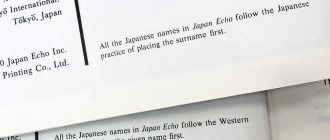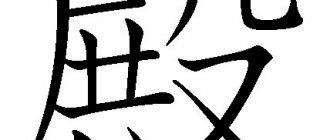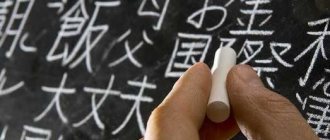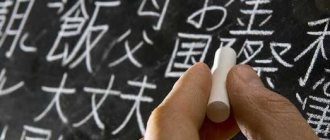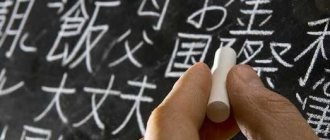If you've ever read manga or watched anime, you've probably heard people address others with -san, -chan, -sensei, or maybe -kun. These are Japanese nominal suffixes that have a similar meaning to "sir" or "ma'am" in English, but it's not quite that simple.
It is impossible to even single out a single rule for their use for everyone. This is an expression of politeness and an indication of the type of relationship between people. In Japan, politeness is very important even in everyday life, so it is very useful to know how to use these suffixes.
Nominal suffix 殿 (どの, dono)
This very old nominal suffix is the predecessor of the suffixes we know today, such as さん (san), 君 (くん,kun), or ちゃん (chan). The suffix 殿 (どの, dono) was used to denote well-fed, portly gentlemen, literally “those with large buttocks” (this may sound strange, but it is true).
Here's how it happened: the character 殿 (どの) comes from the character 臀 (しり, shiri), which means “buttocks.” If you have large buttocks, you sit on them with stability and confidence. Therefore, the character 殿 has an indirect reference to a large strong house. Why? Because a big strong house is stable and strong, just like a heavy-set person.
Going back to those days, let's think about who could reside in large, rich houses such as palaces, sanctuaries or temples? Of course, these are people from privileged classes, high-ranking members of society.
We are approaching the end. In Japan it was considered rude to be too direct. So, calling a person from a privileged class by name was already rude. Thus, people began to call them family estates to soften the appeal. For example, not Tanaka, but coming from Tanaka's house.
Over time, the suffix 殿 came to be used to refer to government officials, such as the emperor's chief advisor, for example. At first, the honorific was used mainly in writing, but people began to use it in spoken language. Eventually, the suffix 殿 began to be used by ordinary people, and this reduced the amount of respect it was given.
The Japanese language needed a new word to take the place of 殿 and carry the same meaning, and so the nominal suffix 様 (さま, sama) was born.
Nominal suffixes in Japanese. How the suffix 殿 (どの) is used in everyday life
As you have seen, the suffix 殿 has undergone many changes. Even though this is an incredibly old call, it still exists. Here are some usage points:
- Typically 殿 is used in writing rather than spoken language.
- 殿 is usually used after a full name.
- Sometimes the suffix 殿 is used after a position (without indicating the person's last name), for example 部長殿 (ぶちょうどの, buchodono, respected director).
- In business/official documents, 殿 may sometimes be used instead of 様 (さま, sama), although the suffix 様 is more common. More and more companies and government organizations are using 様.
- However, citizens can still use the suffix 殿 when writing a letter to a government agency.
- In situations where 殿 would be used in writing, in colloquial speech it is replaced with the suffixes 様(さま, sama) or さん(san).
- The suffix 殿 is used as an address, usually in certificates and diplomas. When an award ceremony or diploma issuance takes place, the person’s name is read out with the suffix 殿, without replacing it with 様.
- 殿 can be used in a sarcastic context when someone is being arrogant.
What are they needed for
They are added to first names, last names and other words that designate the interlocutor or the person in question. Suffixes in Japanese are needed to show social relationships between interlocutors. They are chosen depending on:
- on the character of the speaker;
- relationship to the interlocutor;
- social status;
- situations where communication occurs.
You may be interested in: A pedagogical requirement is... Types of pedagogical requirements
Politeness is very important for the Japanese. Therefore, you need to carefully select nominal suffixes. Then you will show the person that you respect the culture and traditions of his country.
Nominal suffix 様(さま, sama)
When the suffix 殿(どの) became too common, a new word was needed to express the nobility of the one being addressed. Thus, during the Muromachi period (1336-1573), if you wanted to avoid referring to some gentleman by name, you used the suffix 様 (さま).The character 様 was originally written differently, and it was used when one wanted to talk about someone indirectly. At that time, 様 meant “somewhere out there,” so it was more like talking about a location, not about a specific person.
But, as with 殿, people started using 様 as a noun suffix. And if adding 殿 was a polite form of address, such as “Tanaka house,” then 様 was an even more polite form. Instead of calling someone "Tanaka house", they called it "around Tanaka house".
To show the actual use of this suffix at that time, here are some examples. Thus, the emperor who lived in the imperial palace was addressed as 御所様 (ごしょさま, goshosama) or 大御所様(たいごしょさま, taigoshosama). And the daimyo (class of feudal samurai) who lived in 屋形号 (やかたごう, yakatagou) was called 屋形様 (やかたさま, yakatasama).
How honorable was the new nominal suffix 様? Portuguese books on Japanese grammar written during the Edo period (1603-1868) highlight four politeness suffixes used at that time: 殿(どの, dono), 様(さま, sama), 公 (きみ, kimi), and 老(ろう, rou). The most honorable suffix was 様, not 殿. This was the result of the 殿 suffix being used by common people. He immediately lost his significance.
The suffix 様 had different ways of writing, depending on what degree of politeness the speaker wanted to convey. The image below shows variations of its spelling.
In those days, when writing a letter to someone, the character 様 was written in such a way as to take into account the relationship between the people in the correspondence. As you can see in the image, the character 様 is written in eight different ways, and each subsequent spelling is a little rougher and more sketchy. So, when addressing someone in correspondence, you wrote the character 様 in a way that expresses the degree of your closeness to the person. The following will give different names for the suffix 様 depending on its spelling and examples of its use.
- 永様 (えいざま/えいさま, eizama/eisama) : Written in kaisho (standard style), printed handwriting. Writing in this style turns the lower right radical into 永, which is the obsolete/original way of writing the character 様. Very respectful address. This writing method is used when the recipient of the letter is of higher status than the one writing the letter.
- 永様 (えいざま/えいさま, eizama/eisama) : A method similar to the above, but less elaborate and clear, which therefore expresses less respect.
- 次様 (つぎざま/つぎさま, tsugizama/tsugisama) : The lower right radical 永 becomes 次. This treatment is used to refer to people who are slightly higher in social status or to equals.
- 美様 (びざま, hizama) : The right side of the character 様 is written as 美 in sosho style (i.e. italic, cursive). This way of writing is similar to the previous one (次様), but a little less respectful.
- 平様 (ひらざま, hirazama) : This writing method is fragmented, unlike those listed above, it was intended for communication with equals or with those of lower social status.
- 平様 (ひらざま, hirazama) : The writing method becomes a little more deformed, and thus the recipient is given a little less respect.
- 平様 (ひらざま, hirazama) : Another way of writing 平様 (ひらざま, hirazama), even more deformed and, accordingly, even less polite.
- 蹲様 (つくばいざま, tsukubaizama) : Using this method of address was quite rude. The name 蹲様 (つくばいざま) means that the person being addressed “lies on his hands and knees” while making a humiliating bow called 土下座 (どげざ, dogeza).
There are also two more types of writing the address 様, which were not shown in the figure, but which are relevant for our time:
- 水様 (みずざま/みずさま, mizuzama/mizusama) : This is the same 様 that we use today. In earlier times it was used to refer to people of lower social status.
- さま/サマ(sama) : you can write a message to your friend using 様 kana. But remember, 様 written in alphabet does not express respect, so in more formal situations, use the hieroglyphic spelling.
Japanese nominal suffixes. How 様(さま, sama) is used in everyday life
Although 様 is a very respectful form of address and it may seem like something you would never use, there are times when it is appropriate. Here are some examples of when to address a person with the honorific suffix 様:
- Usually this nominal suffix is used after the full name or after the surname
- Hospital name signs may be written 様, but the more common suffix is 殿.
- In the media, they use the 様 suffix when talking about members of the imperial family, even if they are talking about a child.
- In electronic correspondence when contacting clients, customers or superiors.
- It is incorrect to use the 様 suffix after a position, but it is possible to use the 様 suffix after a position followed by a name. For example: 部長のコウイチ様(ぶちょうのコウイチさま, butyou no koiti-sama) “department head Koichi.”
Interesting Facts:
- Organizations such as the Japanese Communist Party, which believes that all people are equal, do not use the suffix 様 even when talking about the emperor.
- National organizations and the imperial family do not use the 様 suffix when referring to the emperor. Instead, they use 陛下(へいか, heika) “His Majesty” or 殿下(でんか, denka) “His Highness.”
Sama
The respectful nominal suffix -sama is used in relation to people of higher social status or rank. If someone is superior to you in social status or work, then the suffix -san should be replaced with -sama. Sama is used to refer to people and clients you admire. The suffix -sama is also used in relation to god (as in the word kami-sama). In Japanese children's fairy tales and anime, you can find the sama suffix used in relation to princesses (hime-sama). To show more respect, the word hime-sama is given an additional prefix "o" (O-hime-sama - princess).
Nominal suffix さん(san)
Eventually, the noble, honorable nominal suffix 様 fell into the hands of the common people. But unlike 殿, which lost its status as number one, 様 remained intact because, once in common use, it became the suffix さん(san), losing the vowel あ at the end.
That's the whole story of the origin of the most famous nominal suffix.
Japanese nominal suffixes. How is さん used in everyday life?
The nominal suffix さん is universal. It can be used on men and women, young and old, for everyone. You'll need to use this call quite often, but to make sure you use it correctly, try to follow these rules:
- さん is used for both men and women, but at school さん is spoken mainly for girls, while for boys the suffix くん is used.
- Don't use さん (or any other nominal suffix) when talking about yourself.
- Use さん when communicating with strangers or someone with whom you are not in a close relationship.
- さん can be used to show respect to someone who has a higher status than you.
- Usually the suffix さん is used after the last name, but if you know the person well enough, you can use the suffix さん after the given name. But make sure the person considers your relationship as close as you do.
- Meanwhile, it is common for Japanese to add the suffix さん after the name when talking about foreigners, because most Japanese know that unlike Japan, where a person is called by his last name, in other countries it is common to call a person by his given name.
- Some people add the suffix さん when talking about companies, groups, and teams. This is to be polite when talking to someone who works for this company.
- The suffix さん is used to refer to family members, especially to elders, for example: お父さん (おとうさん, otousan) “father”, お母さん (おかあさん, okaasan) “mother”, お姉さん (おねえさん, oneesan) “elder sister”, etc. . Previously, the suffix 様 was used in these cases, but now the address お母様(おかあさま, okaasama) sounds archaic.
- Recently, some young people have been calling theirs not 赤ちゃん(あかちゃん, akachyan) “baby”, but 赤さん (あかさん, aka-san), because it sounds funny.
- It is also a common custom to add the suffix さん to animal names, especially when talking to children.
- Similarly, you can add the suffix さん to the names of inanimate objects, such as 冷蔵庫さん (れいぞうこさん, reizooko-san) “Mr. Fridge” or おいもさん (oimo-san) “Mrs. Potato”. It sounds polite, sweet, and kids love it.
- Many professions end with the suffix さん, such as 本屋さん (ほんやさん, hon'ya-san) “bookseller.”
Respectful treatment
A very important component of communicating with the Japanese is maintaining etiquette. Especially with those who occupy a higher social position. This is the Japanese suffix “sama” - by using it you thereby show the highest degree of respect to the interlocutor. Its equivalent is “Mr/Madam”, “Honourable”.
“Sama” is a must if you are writing a letter, regardless of the recipient’s rank. In colloquial speech it is used extremely rarely, only when addressing lower social ranks to higher ones. Or, if the younger ones are very respectful of their older comrade. It is also used by priests when they turn to deities, and girls when they turn to their lover.
"San" is also a Japanese noun suffix. It is used more often than “sama” and it indicates respect for the interlocutor. It is also used when addressing strangers and older relatives.
Nominal suffix ちゃん (chan)
The exact origin of the suffix ちゃん(chan) is unknown, but a popular version is that ちゃん is the suffix さん distorted in children's speech. There is logic to this. When there is a word that everyone knows, children try to repeat it, but they cannot always pronounce it correctly. In Japan, children have trouble pronouncing the sounds さしすせそ/たちつてと(sa shi su se so/ta chi tsu te to), and unwittingly transform them into しゃししゅしぇしょ/ちゃちちゅちぇちょ(sha shi shu sye sho/cha chi chu che cho). So さ becomes ちゃ and suddenly we have a suffix to name children and small and cute things.
Japanese nominal suffixes. How is ちゃん used in everyday life?
We are on shaky ground, be careful with this suffix. You can't use it with everyone. This suffix is a term of endearment between family members, close friends, lovers, and is also used for pets. Use with caution!
- The suffix ちゃん is never used to refer to someone who is senior to you in position. Would you call your boss “sweetie”? Make sure you know the person really well before adding the suffix ちゃん to their name.
- The suffix ちゃん is common in family relationships. You can often hear children call their grandparents おじいちゃん (ojiichyan) and おばあちゃん (obaachyan), and their brothers and sisters おにいちゃん (oniichyan) and おねえちゃん (oneechyan). Sometimes they call mom and dad おかあちゃん (okaachyan) and おとうちゃん (otouchyan), but this is less common.
- The suffix ちゃん is usually attached to the given name rather than the surname. Sometimes the name is shortened to make it sound even sweeter, so コウイチちゃん (kouiti chyan, Koichi-chan) becomes コウちゃん (kou chyan, Ko-chan).
- If you use this suffix with a surname, it will be equivalent to a nickname in Russian. Example: 森ちゃん (もりちゃん, mori-chyan, Mori-chan)
- Typically, this suffix is used to refer to girls rather than boys, but can also be used to refer to boys (especially in childhood).
- People from the Kansai region, especially in Osaka, add the suffix ちゃん to everything. あめちゃん (ame-chyan) “Miss little candy”, イモちゃん (imo-chyan) “Miss little potato”, etc.
- In fact, there is nothing wrong with adding the suffix ちゃん to your own name. If other people give you a nickname with the suffix ちゃん, you can refer to yourself in the third person among them.
Japanese degrees of politeness are a rather interesting thing... and ambiguous.
Are you confused by all these - kun, - chan and other investments in subtitles? This is called Japanese politeness. They are about the same as Mister, Mister, Pan, Miss, Madam and Sir. However, for the Japanese they tell much more about relationships between people.
Nominal suffixes in Japanese are suffixes that are added to a name (surname, nickname, profession, etc.) when talking to or about a person. Nominal suffixes play an important role in Japanese communication. They indicate the social status of the interlocutors relative to each other, their attitude towards each other, and the degree of their closeness. By using any nominal suffix, you can insult your interlocutor, or vice versa - express your deepest respect to him.
Honorific. Honorative is a “form of politeness.” A grammatical category that conveys the speaker’s attitude towards the person in question. It is characteristic primarily of the “polite” Japanese language.
Honorifics are gender neutral, but some are used for one gender more than the other. Kun, for example, is more used for men, and chan for women. Honorifica are usually required when addressing someone, but sometimes they need to be discarded altogether. It's quite confusing.
Kanji (漢字). Kanji
Honorifica is usually combined with the polite speech suffixes -masa and desu. If a person does not use Honorifics at all, then this is a clear indicator of rudeness. This style may seem awkward or even arrogant, a sign of a familiar, cold and “distant” relationship.
Withholding deference signifies intimacy with the person you are speaking to. This is done with spouses, younger family members, very close friends, or those of lower status in society. They also omit it when talking about a family member to another person. However, this phenomenon is common among schoolchildren, students, and hard workers (in an environment where unceremoniousness is quite acceptable).
Hiragana and Katakana. Japanese syllabary
Is it possible to completely do without all these suffixes and proper selection? It is possible, but very, very, very undesirable.
Now let’s move on to the classic “gentleman’s” set of the most common suffixes:
San (さん) is the most common badge of honor. It is a title of respect between equals. A neutral polite suffix that corresponds quite closely to addressing people by first name and patronymic in Russian. This is the English equivalent of Mr., Miss. It can also be attached to animals and objects, but such use is considered childish. Usagi-san roughly translates to Mr. Rabbit. It can also be used to refer to someone who works in a particular place. honya-san ("bookstore" + san) translates to "bookseller".
However, it should be taken into account that in women’s speech this suffix loses its honorative meaning and is used for almost all names. That is, Japanese women address everyone with “-san,” even the closest people (excluding children). This explains the fact that in Japanese films, as well as in anime, women say “-san” even to their husbands. In this case, the suffix does not mean addressing “you”. However, modern young women and girls are less formal in their speech and use “-san” mainly as a neutral-polite suffix.
Tian (ちゃん) is an approximate analogue of diminutive suffixes in Russian. This suffix shows that the speaker finds the person cute. Using chan with the boss's name is considered rude and condescending. Used mainly by young children, close friends (teenagers), adults in relation to children, older people in relation to younger ones with whom close relationships develop.
It is not used in a purely male society; moreover, a man may regard such an address to himself as an insult (unless his beloved girl calls him that). It can also be attached to animals. Young women can use it to identify themselves in order to appear cute and childish. Among otaku, the suffix -tan is also often used in relation to all sorts of mascots and manifestations of moe anthropomorphism (for example: Wikipe-tan, OS-tan, etc.) as a “warmer” version of the suffix -chan.
7 Different Ways to Say "Father" in Japanese
Kun (くん) is a warmer polite suffix than -san. An approximate analogue of the address “comrade” or “friend”. Used by people of senior status to refer to people of junior status or by someone when referring to male children or teenagers. Women may also use this term to refer to a guy they are emotionally attached to or have known for a long time.
It can be used in relation to girls when the suffix “-chan” is inappropriate for some reason (for example, a male teacher to a female student or a girl to a girl in a somewhat official but humorous manner). Kun is not exclusive to men, but is primarily used to refer to men.
Sama (さま) is much more respectful than san. A suffix that shows the greatest possible respect and deference. An approximate analogue of the address “Mr”, “Honourable”. It is used when addressing a priest to deities, a devoted servant to a master, a girl to a lover, as well as in the text of official messages.
This term is used to refer to people who have a much higher status than yourself, clients, or those you greatly admire. When used to refer to oneself, it can appear highly arrogant or self-deprecating (sarcasm), depending on the context. In colloquial speech it is used quite rarely and only when addressing persons of lower social status to higher ones or very respectful address of younger people to elders.
Aniki (兄贴) - verb. "Noble Elder Brother") . Slang honorific, analogue of the Russian "bro".
Senpai (せんぱい) - lit. "Colleague who started early" . Appeal to an older, more experienced person. Also used for high school classmates. More often used as a separate independent word, rather than as a suffix.
Kōhai (こうはい) - verb. “Colleague who started later” , an appeal to a younger person. So, senpai can attach this to the junior's name. This is not usually used.
Sensei (せんせい) - verb. "an earlier being" . "Teacher". Used to refer to teachers and lecturers themselves, as well as doctors and politicians. This refers to someone who has achieved great mastery in something. Like "senpai", often used as a separate word.
Senshu - “Sportsman.” Used to refer to famous athletes.
Si (し) - used in formal writing (documents, scientific papers) and, sometimes, in very formal speech towards strangers (for example, in the news). When a person is mentioned for the first time in a conversation, his name and the suffix si are indicated. Further in the conversation, instead of the full name, only si is used.
Ue (上) literally means "Elder". Shows great respect. It is rarely used, but appears in some phrases such as chichi-ue and haha-ue. Reverent words for father and mother. Or, as they say about the nameless buyer, ue-sama.
Gumi - “Team, group, party.” "Kenshin-gumi" - "Team Kenshin".
Dono. Used (or rather, used to be used) to address samurai to each other. Used in official documents (for example: letters, diplomas, certificates, criminal cases) after the name of the recipient, in business correspondence when indicating the addressee after the name of the company or name. In the army when addressing an officer.
Sometimes the suffix “-dono” is applied to a person whom you would not like to call “-san” because he is inferior to you and you are going to do something unpleasant to him (for example, fire him). These are not all cases of using “dono”
In addition to nominal suffixes, Japan also uses many different ways to address each other and refer to themselves using personal pronouns. The choice of pronoun is determined by the social laws already mentioned above.
Phew. It is quite difficult to follow all these rules. Japan is a very stratified society. These suffixes help to clearly understand the status and opinions of others. Of course, the water is a little cloudy. The senpai-kohai relationship may vary depending on the context for different clubs or organizations, depending on how long one or the other has been with the organization.
Honorifics may be a clue to how characters are related to each other in the anime.
Bullying of students is rampant in Japanese schools. 16+
Views: 4,178
Share link:
- Tweet
- Share posts on Tumblr
- Telegram
- More
- by email
- Seal
Liked this:
Like
Nominal suffix たん、タン(tan)
And it just so happened that さま gave birth to さん, さん gave birth to ちゃん, and ちゃん gave birth to たん(tan). And if ちゃん is a child's version of the suffix さん, then たん turns out to be a child's version of a child's version! If you want to sound cute, you can't think of anything better. This suffix is not common in everyday speech. Adults use the suffix たん when talking to children, and there are also a couple of cartoon characters: ノンタン (non-tan) and うーたん (uu-tan). Except for these cases, the use of たん is very limited.
Japanese nominal suffixes. How is たん used in everyday life?
Here are the situations in which you might encounter the suffix たん:
- People who are in love with each other can use the suffix たん when addressing each other. This usually happens in a private setting, since it is not customary for adults to call each other “babies” in a public place. Although it depends on the person.
- It is quite rare for the suffix たん to be added to one's own name, and is only common among women. Hostesses and prostitutes add たん to their name because clients like it.
- Some pop stars add this suffix to their nicknames. This is what Mizumori Ado, a 1970s star, did and took the pseudonym 亜土タン(あどたん, ado-tan)
- In 2015, among approximately sixty other nominees, the suffix たん was presented as one of the most popular new buzzwords of the year.
- Of course, there are many anime characters that have the たん suffix in their name, such as さくらタン (sakura-tan) from Sakura the Card Catcher and ブリジットタン (burijitto-tan) from Guilty Gear. But sometimes even politicians get the nickname たん when the media thinks it is necessary, as happened with Sato Yukari in 2005, when the press dubbed her Yukari-tan.
- The suffix たん is widely used in otaku names.
- On the popular Japanese website “2ch,” people often use the suffix たん in their conversations to make fun of each other.
- Due to Twitter's character limit, people sometimes use たん instead of ちゃん.
Suffix "Herself"
The suffix “Sama” has the highest position in our hierarchy.
It’s hard to translate literally, but essentially as “honorable.” It is quite rare in spoken Japanese, but it does occur. For example, this is how the service staff may address you when they ask 何名様ですか “Nan mei sama deska” - “table for how many people”? Not San, but herself. Or when you are waiting and they read you from the list, for example: 山田様はいらっしゃいますか “Yamada-sama wa irasshaimaska?” That is, we often use the nominal suffix “Sama” in the conversation of service personnel.
Just like with us, Sama can be used as a joke, this is comparable when we say “Sorry, sir” or something similar, when we deliberately raise a person’s rank as a joke.
Nominal suffix 君(くん, kun)
This word is both a suffix and an independent part of speech (noun). You've probably come across the word 君 (くん, kun) in romantic anime about school, where the teacher called all the cute boys “kun.” But くん was not always a nominal suffix. It began life (and continues) primarily as a noun 君 (きみ, kimi). Today we translate this address simply as “you”.
きみ originally translated as “high class,” and eventually became a noun suffix that was added to goods and places that were considered superior or valuable. Pretty soon, きみ became associated with people who were loved and respected, and women began using it for the men they loved.
As society developed and a ruling class formed, the use of the suffix expanded and began to be applied to heads of government. The suffix きみ was used in conversation about the emperor, leaders of influential families and clans, and eventually entire clans became bearers of the suffix きみ. It was actually a different きみ, for which the character 公 was used; over time, however, 公 and 君 were mixed together.
Of course, words don't stay the same for long, and eventually the high, respectful level of 君 was converted into the second person pronoun "you". Suddenly the use of the word became widespread. Because it showed love and respect, the suffix きみ carried an honorific connotation.
Eventually, the honorific connotation きみ was almost completely lost, and this nominal suffix became the common "you", equivalent to 僕 (ぼく, boku) "I".
All of these seismic shifts in the word きみ occurred before the end of the Edo period. But there was one more change in store: the one we had been waiting for. When the reign of the Tokugawa shogunate came to an end, the class of brutal samurai ceased to exist. At this time, the word 君 began to be read in its second reading くん, and this indirectly spoke of the need to respect everyone, without regard to the conventions of the confusing class hierarchy. The Chairman of the Japanese Diet began using 君 to refer to members of parliament, a tradition that continues to this day.
Japanese nominal suffixes. How is 君 used in everyday life?
This suffix is used throughout Japan for all people, young and old, and not just when talking about the emperor and members of parliament. Here are some usage notes:
- 君 is a more informal suffix than さん.
- The suffix 君 is not used with those who are higher in social status than you.
- The suffix 君 can be used after the surname or after the given name.
- Typically this suffix is used between people of equal social status.
- This suffix can be used for either gender, especially in formal and business situations, but in everyday life 君 is most often used for boys and men.
- At Keio University, both teachers and students address each other using the suffix 君, and only the founder of the university, Fukuzawa Yukichi, is called 先生 (せんせい, sensei). This is a rare occurrence and no other school has such equality practices.
- The child version of this suffix is きゅん (kyun). Since the suffix たん is more common when talking about female anime characters, きゅん was made specifically for discussing male characters. You are unlikely to encounter this suffix outside the Internet.
Communication between seniors and juniors
The main purpose of Japanese nominal suffixes is to show social differences between people in a polite way.
“Senpai” is an addition used by younger people when communicating with older ones. This address is especially often used by younger students in relation to older comrades. It is not only a nominal suffix, but also a separate word, like “sensei”.
“Kohai” is the suffix used by sempai when addressing a younger comrade. It is often used in educational institutions. Also a separate word.
“Sensei” - this suffix is used when addressing teachers, doctors, writers and other famous and respected people in society. Indicates the speaker's attitude towards a person and his social status rather than his profession. It is also used as a separate word.
Final notes on the use of Japanese nominal suffixes
This article lists the main nominal suffixes that you may encounter in everyday life. Before we finish, here are a few notes about politeness in Japanese in general to help you use suffixes more correctly:
- If you are talking about someone who belongs to your circle, for example, the company you work for, and the person speaking to you is outside of this group, do not use nominal politeness suffixes regarding your colleagues, because it is perceived as if you added the suffix さん to your name.
- When people's names are listed, for example in a news report, honorific suffixes are not indicated, but afterward they are marked 敬称略 (けいしょうりゃく, keisyouryaku) “politeness suffixes omitted.”
- Nominal suffixes that express respect can be used in the opposite way, for example to ridicule someone. If you want to make fun of someone, put 様 at the end of their name. This will sound sarcastic.
*article translated from www.tofugu.com
Chan
The nominal honorific suffix -chan is used exclusively in cases where you are very close to the person. Chan is used only in informal settings. It would be very rude to use chan at any conference or meeting. The suffix chan is used to denote babies (aka-chan), small children, close friends, and cute animals. Using the suffix chan to refer to one of your bosses is considered rude. This may leave a bad impression on you.
The suffix -chan can be compared with our Russian diminutive suffixes -enk-, -echk-. For example, instead of Dasha we can say Dashenka, instead of Masha - Mashenka, instead of Lyuba - Lyubochka, and so on. When translating into Japanese in this case, you will need to use the suffix -chan. For example, Lyuba-chan, Masha-chan and so on.
Download a list of Japanese nominal suffixes
It can be hard to keep all those noun suffixes in your head, especially if you need to use them in the moment and don't have time to figure them out (for example, you're in Tokyo and meeting a group of people). In this case, it will be useful to print out a list of nominal suffixes or save them on your smartphone so that you always have access to them. This way you will be able to repeat what you have learned in a timely manner and correctly use forms of politeness.
We also recommend that you sign up for the main course of our school “Japanese for beginners in three steps” using the link.
And right now you can get access to free lessons on learning Japanese characters. To do this, fill out the form below ↓
Get free lessons now!
Suffix "Kun"
" Kun " is less formal and a little more "friendly". It is also a mistake to believe that Kun is used exclusively for men. Yes, in practice, it mostly turns out this way, but it is not 100% always the case. Those. It’s fair to use “ Kun” to refer to a girl, too, if you don’t want to substitute the suffix “ Tian ,” i.e. when the diminutive form is not entirely appropriate. Kun being used for girls .
Those. If you show graphically the rank of politeness, then you can place Kun San ”, but above “ Tian ”.
And these 3 suffixes should be enough for the first couple of years of study. And then come the following suffixes.
Neutral polite address
There are also suffixes in Japanese that are analogous to addressing by first name and patronymic. It is considered neutral polite and is widely used in all walks of life. This is the suffix “san”, it is added in a conversation between people occupying the same social position, younger to older. It is also often used when communicating with unfamiliar people.
But there is a peculiarity: in Japan, women add the suffix “san” to all names except children's names. But this does not imply its use as a polite "you". Modern Japanese girls use it as a polite-neutral addition.
Other types of requests
There are also nominal suffixes in Japanese that are used only in certain situations or are outdated:
“Dono” is used extremely rarely and is considered an outdated title. Previously, samurai often addressed each other this way. Indicates respect and approximately equal social status of the interlocutors. “Dono” is used in official and business correspondence. This suffix can also be used by subordinates when addressing the master’s relatives. This way they show respect or higher social status.
“Ue” is also a rare outdated suffix that is used in conversation when communicating with older family members. It is not combined with names - they only indicate position in the family.
“Senshu” is how athletes are addressed.
“Zeki” is an address to sumo wrestlers.
“Si” is used in official correspondence and rarely in official conversation when addressing strangers.
“Otaku” is a word that means “a person who is very passionate about something.” In Japan, it is indecent to call a person this word, because people associate it with social anxiety and too much enthusiasm. But this does not apply to those situations when a person calls himself an “otaku.” This is often the name given to people who enjoy anime culture.
Suffix "Senpai"
“Senpai” is someone who is “senior” in a particular area. For example, for a 1st grade high school student, the senpai will be a 2nd grade high school student, and for a 2nd grade high school student, the 1st grade student will be Kohai.
We can say that they represent both simple words and nominal suffixes, just like Sensei. Those. they can also be used with names, such as Tanaka-senpai. Or you have been working for the company for 2 years, and another person has been working for 5 years. Who do you think he is for you? Right! Senpai! And for him you are Kohai.
To avoid confusion between Senpai and Kohai, use literal translation and mnemonics. Senpai is “comrade in front”, Kohai is “comrade behind”, and in the distance stands Sensei – “born before”.
Those. We imagine a graph where you stand and in the distance stands the Sensei who was born before you, the kanji Sen just hints that they came before you. Also, ahead of you is Senpai. And Kohai is behind you, as indicated by the kanji “after”.
